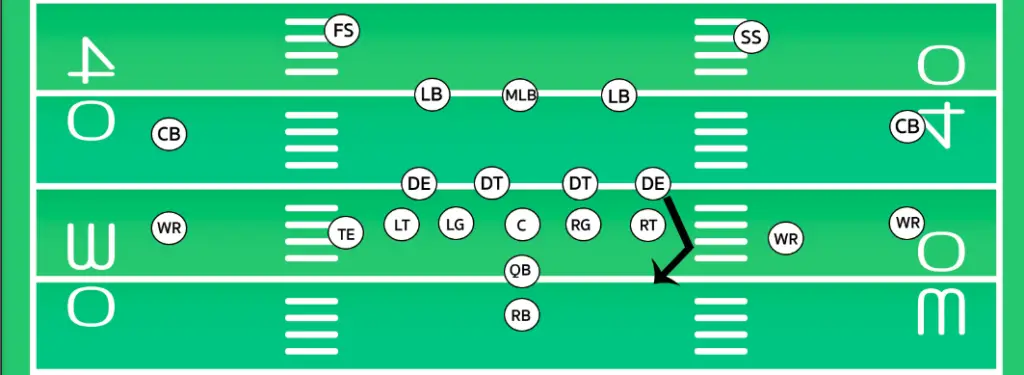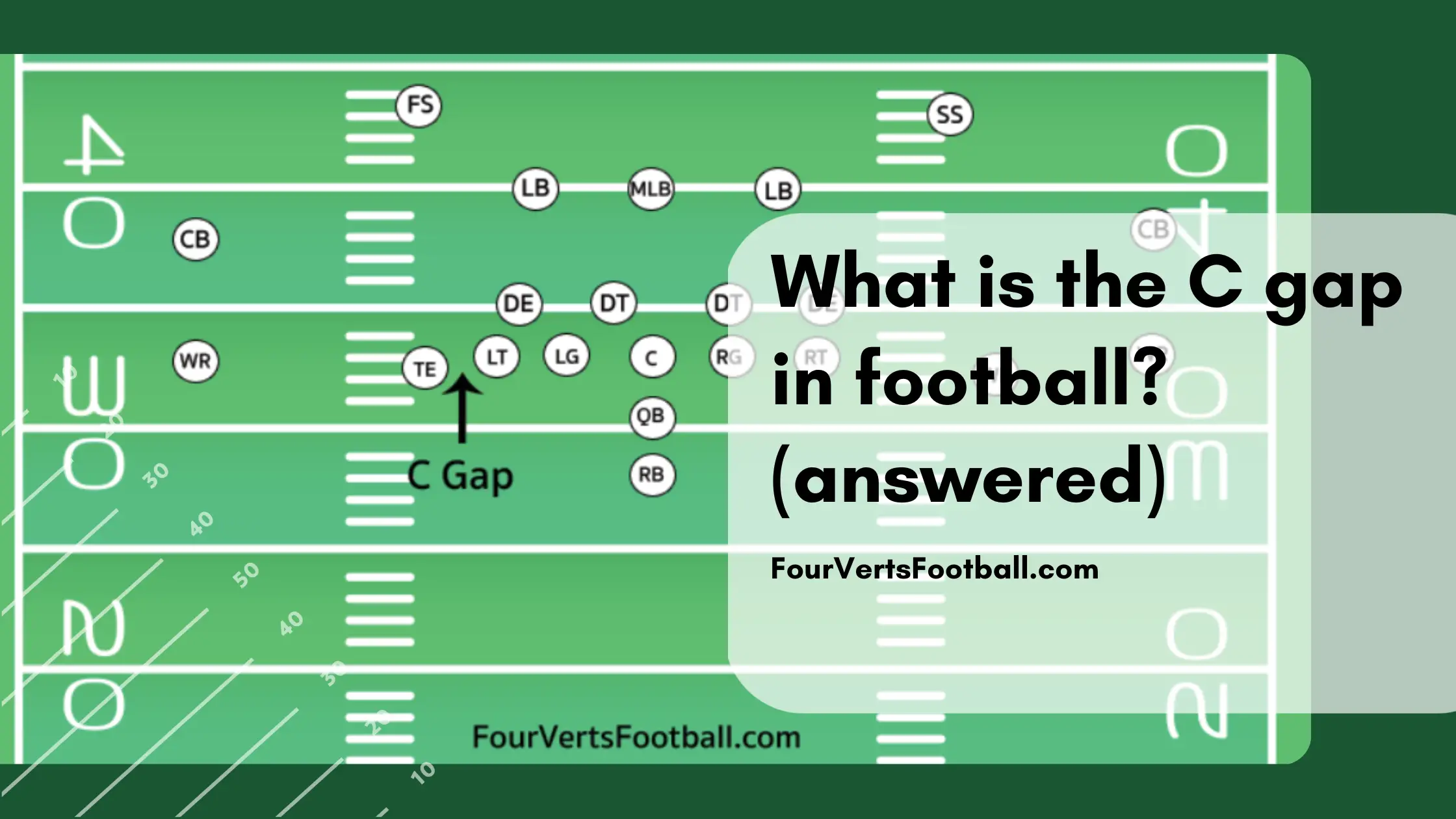In the game of football coaches use a lettering system to label the gaps between offensive linemen. These gaps are labelled in alphabetical order from the middle of the line outwards.
The C gap in football represents the gap outside the offensive tackle. If there is a tight end on the end of the line it is the gap between the offensive tackle and the tight end.
The C gap is used by both the offense and the defense when giving players assignments.
Offensive players will use gaps such as the c gap as an area to run the ball through. While the defense will use the c gap as an area the pass rush or clog up on running plays.
Running through the c gap
On rushing plays the offense is going to designate which gap they plan to run the ball through.
As we stated earlier there are several gaps in the offensive line all designated by a letter.
The area between the center and guard are called the a gap. The area between the guard and tackle is the b gap. And we know the area between the tackle and the tight end is the c gap.
When a rushing play is called in the huddle the offense will use their terminology to state which hole the ball is going through.
This way offensive linemen know which direction they should block the opposing team’s players. The idea is the lineman will push the defenders out of the way so the ball carrier has a running lane.
If the ball carrier is going to run outside their right shoulder they are going to want to block their defender to the left. This is what allows running backs to get past the defensive line on rushing plays.
Pass rushing
When pass-rushing defenders are going to often target the c gap. The reason for this is because it marks the end of the offensive line.
Defensive players that pass rush the c gap can take a wide route around the offensive tackle to get to the quarterback.

This is why players that pass rush the C gap are often some of the highest-paid players on a football team. These players are referred to as edge defenders and line up on the end of the defensive line.
Since they are on the end of the line they are often given one on one matchups against the offensive tackle. This gives them plenty of opportunities to get into the offensive backfield and bring down the quarterback.
On some occasions, the c gap can be rushed by interior defensive lineman as well but this is fairly uncommon.
Run Defense
When it comes to run defense the defensive players are assigned gaps to fill. Depending on the defense a player may be asked to fill one or two gaps.
When a gap is assigned to a defender they have the assignment of either plugging the gap or tackling the ball carrier.
In a one-gap defense one defender will be assigned to each gap in the offensive line. When the defense realizes it is a rushing play they can go full tilt towards their assigned gap and plug it.
In a two gap defense defenders have to be a little more patient. These players have two gaps they are responsible for so they must wait to see which one the player is going to run through.
Choosing the wrong gap in this situation usually means some easy yards for the defense.
Since the c gap is near the end of the offensive line it is usually edge defenders that cover this area. The edge defender is often given a contain role when playing run defense in the c gap.
This means their responsibility is to keep the ball carrier inside the backfield. In other words, the edge defender must contain the play and force it back to the middle of the field.
On rushing plays that go towards the C gap the edge defender will often have to take on double team blocks in order to get to the ball carrier.

